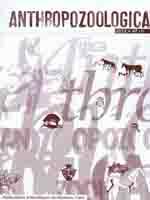Expeditionary forces and herpetological discoveries in Antiquity
A number of impressive cases of armies confronted by venomous serpents in remote parts of the world are mentioned in ancient texts: from the eastern campaigns of Alexander and of Pompey to the expeditions led in Northern Africa, the Levant and Arabia, several recurring themes raise questions about the epistemological function of these military episodes. As well as traditional fears about the potential dangers of unknown territory, various aspects of these accounts are related to the discovery of knowledge about ophidians: an exploratory mission, the behaviour of the group, unfavourable circumstances, the presence or absence of medical specialists, information supplied by native people. This paper offers an overview of these different expeditions and of the ophidians discovered and explores the boundaries between legend, history and science. The study reveals that two types of situation generally occur: the armies are either confronted with truly dangerous species (Bungarus, Eristicophis macmahonii, Cerastes cerastes, Cerastes vipera), or they consider serpents which are in fact harmless to be harmful (Eryx jaculus, Coluber elegantissimus). Both situations serve to exaggerate the portrayal of this kind of encounter as catastrophic.





